The Atholl Highlanders is a Scottish ceremonial infantry regiment. They are the only remaining private army in Europe, and act as the personal bodyguard to the Duke of Atholl; Chieftain of the Clan Murray, a family that has thrived in Perthshire for some 750 years. Although it has no official military role, this hand-picked body of local men are armed with Lee Metford rifles, and the regiment includes a pipe band. Joining the Highlanders is by invitation-only from the Duke, who specially selects men with ties to the estate or the local area. The regiment is not part of the British Army but under the command of the Duke of Atholl, and based in at Blair Castle, Blair Atholl.
 W
WThe Band of the Coldstream Guards is one of the oldest and best known bands in the British Army, having been officially formed on 16 May 1785 under the command of Major C F Eley.
 W
WThe Band of the Grenadier Guards is one of the bands in the British Army.
 W
Wb The Band of the Irish Guards is one of five bands in the Foot Guards Regiments in the Household Division whose main role is to guard the British monarch. The Band supports the Regiment by providing the musical backing to which much of the ceremonial duties depend within Central London.
 W
WThe Band of the Royal Regiment of Scotland is the official regimental military band of the Royal Regiment of Scotland based at Dreghorn Barracks, Edinburgh. The Band's musicians wears the Feather bonnet with a red over white hackle and scarlet Doublet in Full Dress Uniform. In addition, there are two Territorial bands, the Highland Band and the Lowland Band, which are administered by the regiment's territorial battalions. It is also one of two line infantry bands in the Corps of Army Music.
 W
WThe Band of the Scots Guards is one of five bands in the Foot Guards Regiments in the Household Division which primarily guards the British monarch.
 W
WThe Band of the Welsh Guards is the youngest of the five bands in the Foot Guards Regiments in the Household Division which primarily guards the British monarch.
 W
WThe Bands of the Household Division refer to the amalgamated five military bands of the Foot Guards regiments that perform in a massed bands configuration during public duties events in London, the national capital of the United Kingdom. The bands are:Band of the Coldstream Guards Band of the Grenadier Guards Band of the Irish Guards Band of the Scots Guards Band of the Welsh Guards
 W
WMilitary bands in the United Kingdom are the musical units that serve for protocol and ceremonial duties as part of the British Armed Forces. They have been the basis and inspiration for many military bands in the former British Empire and the larger Commonwealth of Nations as well as musical organizations in other countries. Military musical units with British influence include United States military bands, the Japan Ground Self-Defense Force Music Corps and the Military Band of Athens. British military bands are controlled by the military music departments of the three services that compose the armed forces. These include the Royal Marines Band Service, the Corps of Army Music, and the Royal Air Force Music Services. British style brass bands and carnival bands were then and are currently inspired by the British Armed Forces and its brass bands, especially of the Army's regular and reserve formations, as they follow a similar format as it relates to brass and percussion instruments.
 W
WA Chelsea Pensioner, or In-Pensioner, is a resident at the Royal Hospital Chelsea, a retirement home and nursing home for former members of the British Army located in Chelsea, London. The Royal Hospital Chelsea is home to 300 retired British soldiers, male and female, and is located on Royal Hospital Road. Historically, the term "Chelsea Pensioner" applied more widely, referring to both In-Pensioners and Out-Pensioners who live elsewhere.
 W
WThe Coldstream Guards is a part of the Guards Division, Foot Guards regiments of the British Army.
 W
WThe Company of Pikemen & Musketeers is a ceremonial unit of the Honourable Artillery Company (HAC), which provides a regiment for the Army Reserve and is associated with the City of London. The HAC is the oldest regiment in the British Army, though not the most senior.
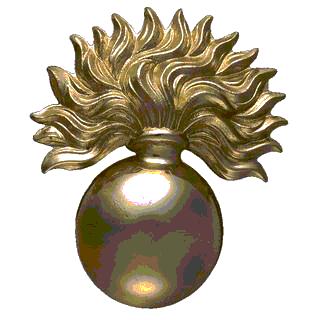 W
WThe Grenadier Guards is an infantry regiment of the British Army. It can trace its lineage back to 1656 when Lord Wentworth's Regiment was raised in Bruges to protect the exiled Charles II. In 1665, this regiment was combined with John Russell's Regiment of Guards to form the current regiment, known as the 1st Regiment of Foot Guards. Since then, the regiment has filled both a ceremonial and protective role as well as an operational one. In 1900, the regiment provided a cadre of personnel to form the Irish Guards; while later, in 1915 it also provided the basis of the Welsh Guards upon their formation.
 W
WThe Honourable Artillery Company (HAC) was incorporated by royal charter in 1537 by King Henry VIII and is considered the second-oldest military corps in the world. Today, it is a registered charity whose purpose is to attend to the "better defence of the realm". This purpose is primarily achieved by the support of the HAC Regiment and a detachment of City of London Special Constabulary. The word "artillery" in "Honourable Artillery Company" does not have the current meaning that is generally associated with it, but dates from a time when in the English language that word meant any projectile, including for example arrows shot from a bow. The equivalent form of words in modern English would be either "Honourable Infantry Company" or "Honourable Military Company".
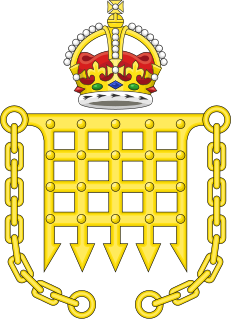 W
WHer Majesty's Body Guard of the Honourable Corps of Gentlemen at Arms is a bodyguard to the British Monarch. Until 17 March 1834, they were known as The Honourable Band of Gentlemen Pensioners.
 W
WThe Household Cavalry Mounted Regiment (HCMR) is a cavalry regiment of the British Army tasked primarily with ceremonial duties. Part of the Household Division, it is classed as a regiment of guards, and carries out mounted ceremonial duties on State and Royal occasions. The HCMR is one of two operational units that form the Household Cavalry (HCav), the other being the Household Cavalry Regiment (HCR). That unit is a formation reconnaissance regiment, with front-line combat duties.
 W
WHousehold Division is a term used principally in the Commonwealth of Nations to describe a country's most elite or historically senior military units, or those military units that provide ceremonial or protective functions associated directly with the head of state.
 W
WThe Irish Guards (IG), part of the Guards Division, is one of the Foot Guards regiments of the British Army and, together with the Royal Irish Regiment, it is one of the two Irish infantry regiments in the British Army. The regiment has participated in campaigns in the First World War, the Second World War, the Iraq War and the War in Afghanistan as well as numerous other operations throughout its history. The Irish Guards claim six Victoria Cross recipients, four from the First World War and two from the Second World War.
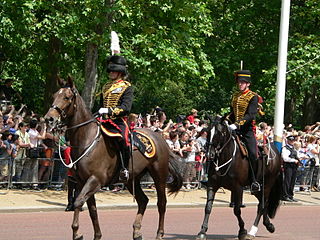 W
WThe King's Troop, Royal Horse Artillery is a ceremonial unit of the British Army, quartered at Woolwich. It is a mounted unit and all of its soldiers are trained to care for and drive teams of six horses pulling each of six First World War-era QF 13-pounder guns used today to fire salutes on state occasions. Its duties include the firing of royal salutes on royal anniversaries and state occasions, and providing a gun carriage and team of black horses for state and military funerals. The unit is most often seen providing gun salutes on state occasions in Hyde Park, and Green Park.
 W
WThe Lonach Highlanders are members of The Lonach Highland and Friendly Society, made up of men from the Strathdon area of Aberdeenshire in Scotland. The society was formed in 1823. The principal aims of the Society are the preservation of Highland Dress and the Gaelic language; to support loyal, peaceable manly conduct and the promotion of social and benevolent feelings among the inhabitants of this district. It was further agreed to open a fund for distressed members and their families. Unlike the Atholl Highlanders, the Lonach Highlanders have never been presented with colours, and are not considered a military unit. However they do carry the society colour and two banners ensigned "LONACH".
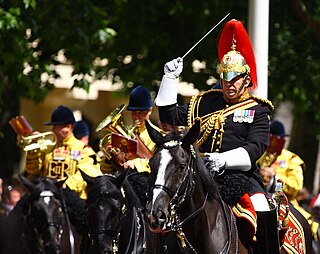 W
WThe Mounted Band of the Household Cavalry is a British Army band which ceremonially serves the Household Cavalry Mounted Regiment (HCMR). The HCMR Band is the largest symphonic wind band in the British Army and the foremost Mounted band in the armed forces. It is one of the reserve bands in the Corps of Army Music (CAMUS) and is currently based at Hyde Park Barracks and Combermere Barracks.
 W
WThe National Marching Band of the RAF Air Cadets is a military band made up of teenagers musicians of the Royal Air Force Air Cadets. It is considered to be a key musical ambassador for the RAFAC, with the band having given many notable performances at 10 Downing Street, Lincoln Cathedral, Twickenham Stadium, Whitehall, and the International Air Tattoo.
 W
WPublic duties are performed by military personnel, and usually have a ceremonial or historic significance rather than an overtly operational role.
 W
WThe Queen's Colour Squadron is the unit of the Royal Air Force charged with the safe-keeping of the Queen's Colour for the Royal Air Force in the United Kingdom. Since its formation, it has been manned exclusively by officers and men of the RAF Regiment. It also has a secondary operational role as 63 Squadron RAF Regiment, a Regiment Field Squadron (RFS), responsible for the defence of RAF and other assets on the ground from enemy forces.
 W
WThe Queen's Guard and Queen's Life Guard are the names given to contingents of infantry and cavalry soldiers charged with guarding the official royal residences in the United Kingdom. The British Army has regiments of both Horse Guards and Foot Guards predating the English Restoration (1660), and since the reign of King Charles II these regiments have been responsible for guarding the Sovereign's palaces. The Guards are fully operational soldiers.
 W
WThe Royal Company of Archers is a ceremonial unit that serves as the Sovereign's Bodyguard in Scotland, a role it has performed since 1822 during the reign of King George IV, when the company provided a personal bodyguard to the King on his visit to Scotland. It is currently known as the Queen's Bodyguard For Scotland, and is located in Edinburgh, the capital city. The Royal Company of Archers has a long history in Scotland as a body that celebrated both the recreation and talent of local archers. As a body established by the Monarch, the Company has a long history of unique prizes, influential supporters, and ceremonial roles.
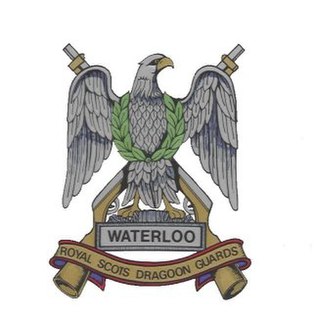 W
WThe Royal Scots Dragoon Guards is a cavalry regiment of the British Army, and the senior Scottish regiment. The regiment, through the Royal Scots Greys, is the oldest surviving Cavalry Regiment of the Line in the British Army. The regiment is currently based at Leuchars Station, as part of the Scottish 51st Infantry Brigade.
 W
WThe Royal Signals Motorcycle Display Team (RSMDT), also known as the White Helmets, was a group of serving soldiers from the Royal Corps of Signals of the British Army, who gave public displays of motorcycling skills, acrobatics and stunt riding. The team was based at the home of the Royal Signals at Blandford Camp in Dorset. The team was disbanded at the end of 2017.
 W
WThe Scots Guards (SG) is one of the Foot Guards regiments of the British Army. Its origins lie in the personal bodyguard of King Charles I of England and Scotland. Its lineage can be traced back to 1642, although it was only placed on the English Establishment in 1686. It is the oldest formed Regiment in the Regular Army, more so than any other in the Household Brigade.
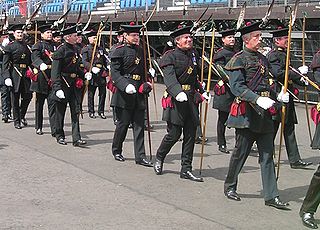 W
WSovereign's Body Guard is the name given to three ceremonial units in the United Kingdom under the British Army who are tasked with guarding the Sovereign. These units are:Her Majesty's Body Guard of the Honourable Corps of Gentlemen at Arms - formed 1509 Queen's Body Guard of the Yeomen of the Guard - formed 1485 Royal Company of Archers, the Queen's Body Guard for Scotland - formed 1676; entered royal service 1822
 W
WIn the United Kingdom, state funerals are usually reserved for monarchs. The last such funeral was held in 1952 for King George. In addition, very exceptionally, a state funeral may be held to honour a highly distinguished figure, with the approval of the monarch and with Parliament's approval. There was a state funeral in 1965 for Sir Winston Churchill.
 W
WThe Town Serjeant is the Serjeant-at-Arms for local municipalities in English borough councils and serves as a law enforcement official for some towns in the United States.
 W
WThe Welsh Guards, part of the Guards Division, is one of the Foot Guards regiments of the British Army. It was founded in 1915 as a single-battalion regiment, during the First World War, by Royal Warrant of George V. Shortly after the regiment's formation, it was deployed to France where it took part in the fighting on the Western Front until the end of the war in November 1918. During the inter-war years, the regiment undertook garrison duties in the United Kingdom, except 1929–1930 when it deployed to Egypt, and late 1939 when it deployed to Gibraltar.
 W
WThe Queen's Body Guard of the Yeomen of the Guard are a bodyguard of the British Monarch. The oldest British military corps still in existence, it was created by King Henry VII in 1485 at the Battle of Bosworth Field. As a token of this venerability, the Yeomen still wear red and gold uniforms of Tudor period. There are 60 Yeomen of the Guard, drawn from retired members of the British Army, Royal Marines and Royal Air Force, but traditionally not the Royal Navy. This ban on Royal Navy Personnel was lifted in 2011 and two sailors joined the ranks of the Yeomen of the Guard. However, the role of the Captain of the Yeomen of the Guard is a political appointment — the captain is always the government Deputy Chief Whip in the House of Lords.
 W
WThe Yeomen Warders of Her Majesty's Royal Palace and Fortress the Tower of London, and Members of the Sovereign's Body Guard of the Yeoman Guard Extraordinary, popularly known as the Beefeaters, are ceremonial guardians of the Tower of London. In principle they are responsible for looking after any prisoners in the Tower and safeguarding the British crown jewels. They have also conducted guided tours of the Tower since the Victorian era.